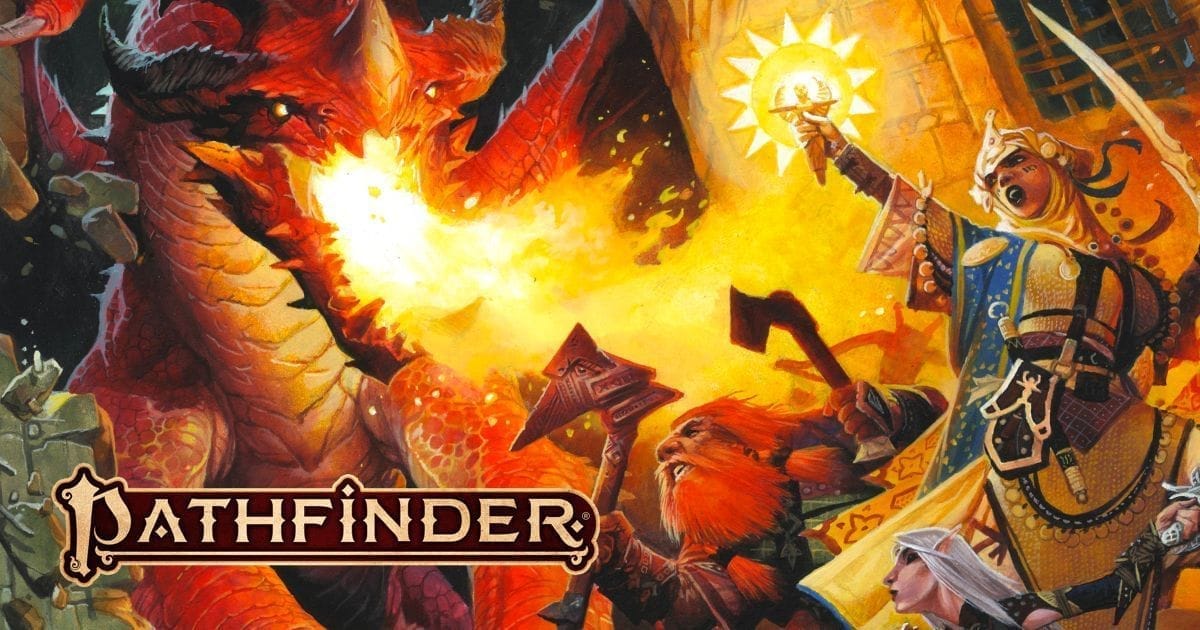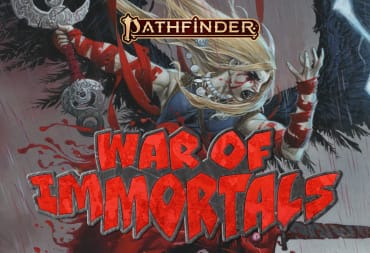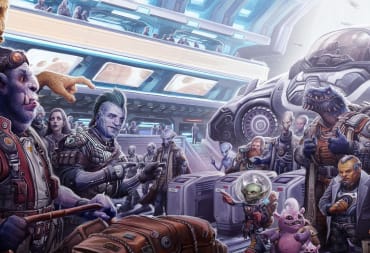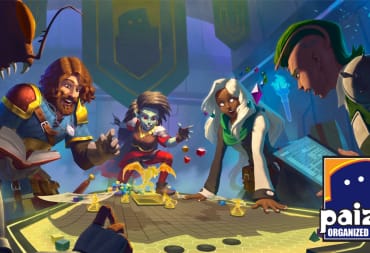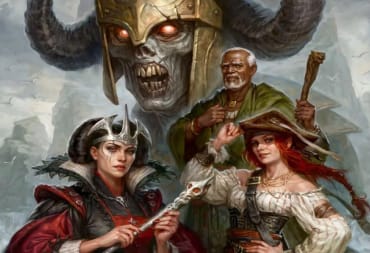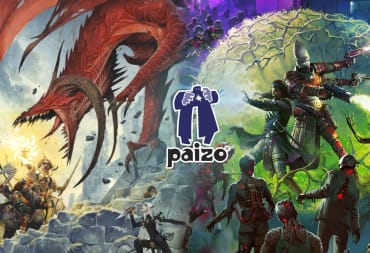Pathfinder and Pathfinder Second Edition present a weird alternate-universe feel when compared with one another. Pathfinder was a continuation and re-balancing of the 3.5th edition of Dungeons & Dragons when that game shifted to the far more combat focused form in its 4th Edition. Pathfinder allowed players who wanted the more numbers-heavy, more involved roleplaying that they loved to live on, and it continued to thrive for over a decade. Enter Pathfinder Second Edition, a more streamlined and focused version of a game following in the wake of DnD 5e with an increased focus on accessibility.
While it could be eye-rollingly ironic that Paizo, Inc is taking the game in a direction that it was originally created to resist, it's fairly obvious that the designers of Pathfinder Second Edition have been paying attention to the newer versions of D&D, particularly the wildly popular 5th Edition, as well as their own products like Starfinder, and they've managed to make Pathfinder Second Edition far easier to jump in to for new players while still keeping the core systems chunky and deep without being too obtuse. They've certainly trimmed a lot of fat, especially where combat is related, but this is still a robust, crunchy RPG system, and the core rulebook actually clocks in at nearly 630 pages, as compared to the not-quite 580 of the first edition rulebook.
I've played a fair amount of D&D 3.5, a little Pathfinder, and a lot (and still playing) of my favorite RPG Starfinder, so those are going to be my points of reference while discussing Pathfinder Second Edition. I don't have any experience with D&D 5th Edition though, so I won't be making any comparisons there. If I do make a direct comparison I'll call it out, otherwise my comments will be directed at Second Edition through the lenses of my personal RPG experience. I'm going to try to cover the book cover to cover, but I wont necessarily talk about every single detail, both to savor some of the mystery for you if you plan to pick up your own copy, and because there is simply too much stuff in this book to cover it all.
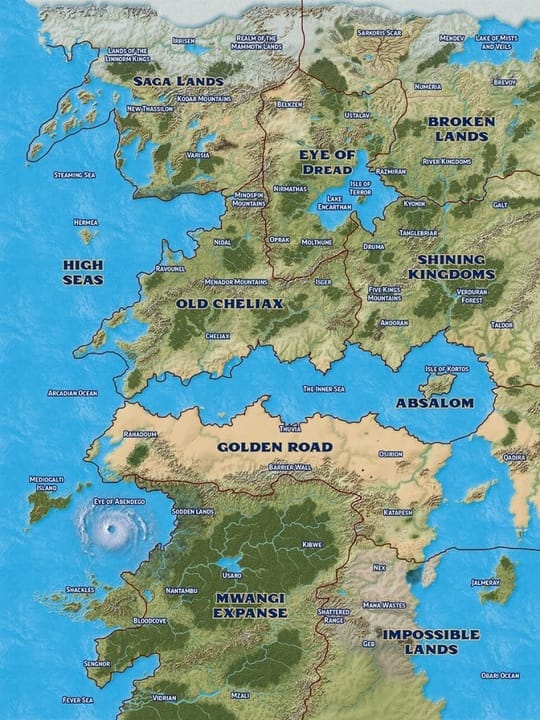
It's obvious as soon as you crack open the Pathfinder Second Edition Core Rulebook that a lot of time and consideration has gone in to making the game accessible to new players. The standard introduction is here that explains what a Roleplaying Game is, what you'll need, Key Terms etc, but the layout makes a lot of the key information easier to parse. Important bits have been pulled out of the main body of text and have their own entries in the sidebar, which draws the eye, and makes finding them for reference later a lot easier. The different pieces of info are parsed out in an easy to digest way, especially when it comes to one of the most massive changes that this game makes; Actions.
Gone are move actions, standard actions, full actions etc. Pathfinder 2e now uses a more standardized action system, and it uses symbols to denote how many of your 3 available actions per round any particular spell, combat ability, feat etc any particular action requires. There is the single action symbol, the two-action symbol, the three-action symbol, and a symbol each for Free Actions and Reactions. The action symbols are everywhere throughout the book and make it easy to tell at a glance how expensive any particular action is. This also means that the action economy in combat is easier to parse as you can simply spend three actions as you see fit. Want to attack 3 times in a row with your level 1 character? Go for it, although good luck landing your second and third hits at low levels with the increasing multiple attack penalty.
Moving forward, race has been changed to Ancestry. It's not simply a semantic change, even though you will be picking a race, because you now have options based on your chosen race that expand as you level up. You don't simply get the benefits and drawbacks of your chosen race anymore, now you choose your race, which determines your starting Hit Points, your size, your Speed and some other stats and abilities, but you then choose a Heritage, which further customizes your abilities. For example: if you want to be a Dwarf, you now choose from Ancient-Blooded, Death Warden, Forge, Rock and Strong-Blooded Dwarf, each having different thematic elements and different abilities, tweaks or stat changes that you'll apply to your character. Most of the book is like this by the way, with the thematic and the mechanical woven together in the same block of text. For the most part it's neat, and helps make the rules feel more natural, although it can be tough to differentiate the flavor from the rules in some places. Finally, every Ancestry also has a list of Feats (you are going to notice that Pathfinder 2e LOVES its Feats) that further help you tailor your character to match your idea, or min/max them depending on your approach.
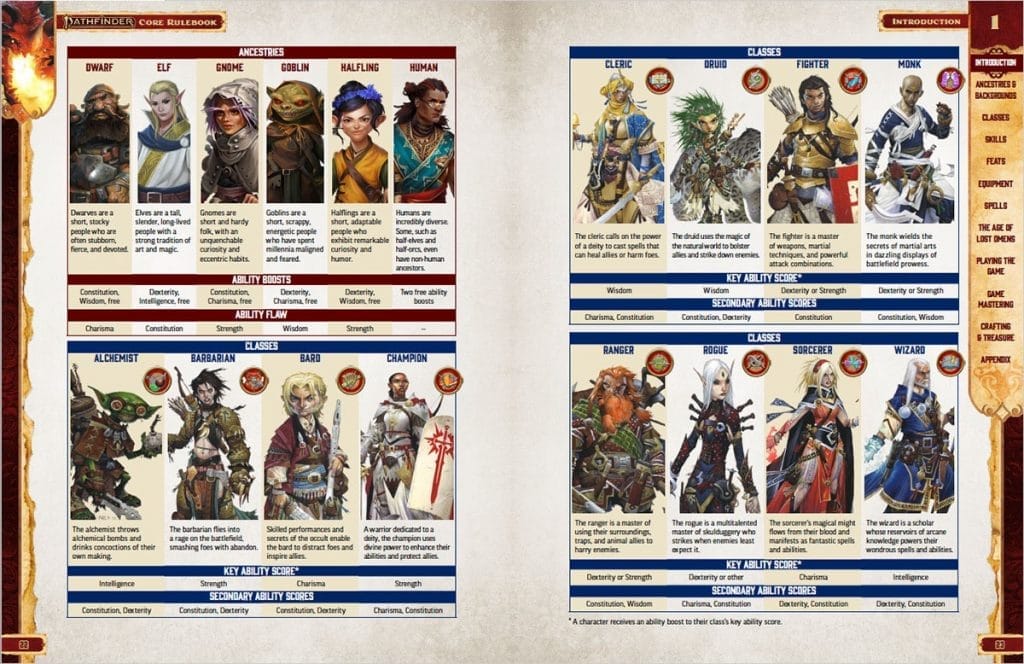
Every character has a Background as well. Backgrounds are another mishmash between theme and rules, and determine some of your stat boosts (read: +2) as well as some of the skills you are Trained in. I'm not sure if this is good or bad for new players, because the stat boosts you get are really going to effect which classes you can play effectively, so chosing a Background simply based on its thematic elements could be a disservice to new players, whereas experienced players will probably fish through it until they find the stats they want, and then throw the thematic bits out entirely (or maybe figure out a way to incorporate them into their backstory). This section comes before Classes, and I feel like it should have come after. It is very thematic, but it does do new players a bit of a disservice to ask them to pick out some stat boosts before they really know what their class needs, assuming you are building a character in the recommended order that is.
After the minor hiccup of a premature Background choice, we hit the excellent Class choice. Pathfinder 2e has 12 classes to choose including Alchemist, Barbarian, Bard, Champion (replacing Paladin), Cleric, Druid, Fighter, Monk, Ranger, Rogue, Sorcerer and Wizard. Each class has a full page dedicated to how they play, how others think of you, and a handy sidebar that outlines the relevant Proficiencies, Perception, Saving Throws etc for the class. It's easy to get a feel for the class simply by looking at this intro to the class, and the advancement table for each class is way easier to read than the old numbers-heavy advancement tables from Pathfinder. It's now easy to parse out what your character class gives you at each level, and inside of each class are more choices, in the form of class Feats, that let you customize your class to your play-style. Even with all of the options available in the base classes, if you can't find quite what you want, or you want to dabble in another class's powers you can use the Archetype system to swap out some of your class feats for those that are similar to, if not a bit less powerful (at least upon first glance) than another class.
BAB (base attack bonus), and various Armor Class modifiers like Touch AC have gone the way of the Dodo as well. Nearly everything that involves a roll now uses the TEML system. This is a huge change, and it took me a bit longer than it should have to get my head around. TEML stands for Trained, Expert, Master and Legendary, and they correspond directly to bonuses of +2, +4, +6, and +8 respectively. Most checks involve adding your TEML to your character's level (this number is your Prof) and your relevant stat. Multiple attacks are gone, and your Prof for everything changes with your level, so it's easy to calculate, and it makes any boost in TEML an important factor in the power of your character. If you are untrained your Prof = 0, so getting to at least Trained makes a bigger and bigger difference the longer you play. You can't move past Expert in anything until you reach level 7, and Legendary status requires at least level 15.
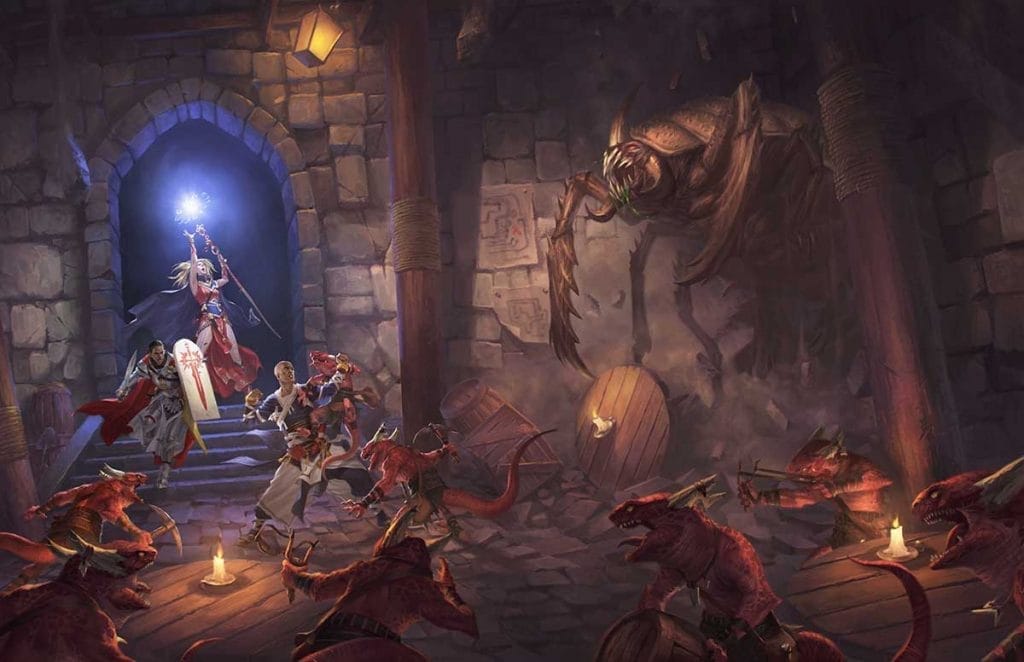
The list of Skills in Pathfinder 2e has been pared down significantly. From the original's 30+ skills the list has been trimmed to 18 on sheet (two Lore skills) and Perception has been pulled out of the Skills list entirely and has become its own entity, and it now also pulls double-duty as Initiative as well in most cases (at GM discretion other checks may be used: Stealth when sneaking for example). This is one of my favorite changes in this system, even though it doesn't seem like that big of a deal initially. In other games, Starfinder for example, some of the players who play classes with a low skill allocation don't even bother making Perception rolls, because the skill-monkey is always the one who finds everything anyway. Now certain classes may be better at it, but everyone at least has a chance, and while it doesn't seem like much, being involved in the only roll in a 20 minute exploration segment of a session can mean the difference between engagement in the game, and checking out memes on your phone.
Spellcasting has been streamlined as well, although the spell list is robust and varied, and the core rulebook has spells all the way up to 1oth level. Combat focused spells are broken out into two main categories now, those that have the Attack trait, and those that don't. For Attack spells the caster makes an attack using their Spell Attack DC vs the target's AC. There is no more fiddling with what type of attack spell it is, and whether it makes a ranged attack, or a touch attack, or a ranged touch attack, there is simply the one check made vs AC. Other spells, including offensive spells that are not attacks, use the casters Spell DC to determine saves. Both Spell Attack DC and Spell DC use TEML, so once you come to terms with the system it's easy to see exactly what save your target needs to make, and what you'll need to roll to hit them with your Acid Arrow etc. Spell Attacks count as attack actions exactly the same way that weapon attacks do, so they now also suffer from multi-attack penalties if you choose to fling more than one spell attack per round. The rulebook spends 10 pages describing how spellcasting works, which makes it much easier to learn for new players, and each spell also outlines exactly what benefits you get if you heighten a spell. Some spells only provide improvements when heightened at certain intervals, like the ever-popular Negate Aroma spell: It's a first level spell that makes a single target lose its odor, but if you heighten it to 5th you can increase the range to 30 feet and target up to 10 creatures. The spell tags and the Heightened call-out make it much easier to decide which spells you should prepare based on what you think might happen in your next session.
The Core Rulebook also contains a short primer to The Age of Lost Omens in which Pathfinder 2e takes place, with a map and blurbs about various interesting points in the Inner Sea region before jumping into the Playing The Game Section, followed by Game Mastering and Crafting and Treasure. The Tactical Rules are similar enough to Pathfinder, and extremely similar to Starfinder, that it will be easy for anyone who has played a grid-based d20 system to jump in and start playing right away, and the Game Mastering section does a good job of introducing the role of GM to new players while still having a ton of juicy goodies, especially in the Crafting and Treasure section, for long-time GM's to sink their teeth into. One thing about the GM section that I really like is Pathfinder 2e's Experience points system. I tend to be a checkpoint-level GM, but this new system used a fixed 1000xp threshold for leveling characters, and it ties that directly in to the Encounter budgeting system. It remains to be seen if the CR system of Pathfinder 2e's Bestiary (which I'll be covering soon) hits the sweet spot for encounter difficulty, but if it's even close it's going to be a breeze to build encounters with a particular leveling-point in mind for your players, and it will be much easier for players to keep track of just how close they are to their next level since their next level will always be when they hit that magical 1000xp mark.
At this point I'm quite impressed with Pathfinder 2e, and I can't wait to get it to the table so that I can see if the streamlining works as well in practice as it seems to work on paper and in my head. I already have a group of 3 (relatively new) players lined up and ready, so I'll be sure to follow up with my thoughts after playing a few sessions. The folks at Paizo, Inc have certainly trimmed the complexity quite a bit, but it will take some time behind the screen chucking dice to see if it has effected the depth of the game at all. I really liked the direction they took with Starfinder and, even though they obviously share some of the same genetics, I'm excited that this system is different enough, and appears to be intuitive enough that I'll be able to run both games without getting bogged down in a quagmire of overly complex, unsatisfying rules. Numerous other changes that I haven't even touched on, such as a completely re-balanced economy, help give Pathfinder 2e it's own personality, and I'm excited to become more familiar with the ins and outs of this system.
The copy of the Pathfinder Second Edition Core Rulebook used for this article was provided by Paizo, Inc.
Previews you can trust: To ensure you're getting a fair, accurate, and informed review, our experienced team spends a significant amount of time on everything we preview. Read more about how we review games and products.
Have a tip, or want to point out something we missed? Leave a Comment or e-mail us at tips@techraptor.net
